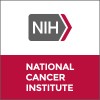Therapeutic Drug Monitoring and Viral Resistance Testing in the Treatment of HIV-Infected Children
HIV Infections

About this trial
This is an interventional treatment trial for HIV Infections focused on measuring Antiretrovirals, Adherence, Dose Adjustments, Genotypic Resistance, Phenotypic Resistance
Eligibility Criteria
INCLUSION CRITERIA: HIV-infected children between the ages of 0 and 21 years An indication for treatment with a PI containing antiretroviral regimen as defined by the 2001 Guidelines for the Use of Antiretroviral Agents in Pediatric HIV Infection (one of the following): Clinical symptoms associated with HIV Infection (i.e., clinical categories A, B, or C) Evidence of immune suppression indicated by CD4 T-lymphocyte count or percentage (i.e., immune category 2 or 3) Age less than 12 months - regardless of clinical, immunologic, or virologic status High or increasing HIV RNA copy number Rapidly declining CD4 T-lymphocyte number or percentage to values approaching those indicative of moderate immune suppression (i.e., immune category 2) Children failing current treatment as defined by the 2001 Guidelines for the Use of Antiretroviral Agents in Pediatric HIV Infection (http://www.hivatis.org/) (one of the following): Less than a 10-fold decrease from baseline viral load in patients on a HAART regimen (combination regimen that includes a PI and/or NNRTI) after 8-12 weeks of therapy. Less than a 5-fold decrease in viral load from baseline in patients on non-HAART regimen (e.g., dual NRTI combinations) Viral load not suppressed to undetectable levels after 4-6 months of antiretroviral therapy Repeated detection of HIV RNA in patients who initially responded to antiretroviral therapy with undetectable levels. An increase in viral load of greater than 3-fold. Change in immunologic classification For children in immunologic category 3, a decline of five percentiles or more in CD4 cell percentage A greater than 30 percentage decline in absolute CD4 cell count. Progressive neurodevelopmental deterioration Growth failure Disease progression Intolerant to or are showing evidence of toxicity from other antiretroviral treatments. HIV RNA greater than or equal to 5,000 copies per/ml within the past 3 months (may be from outside institution). Sexually active patients must be willing to use a medically acceptable form of birth control, which includes abstinence, while they are on this study. Hematologic Function: Total WBC greater than 1,500/mm(3), Absolute Neutrophil Count greater than 750/mm(3), hemoglobin greater than 8.0 gm/dL and platelet count greater than 75,000/mm(3) at study entry Hepatic Function: Liver transaminases must be less than or equal to 3.0 times the upper limit of normal; Lipase less than 1.5 times the upper limit normal; Creatine phosphokinase (CPK) less than 2.5 times the upper limit of normal. Renal Function: Patients must have an age-adjusted normal serum creatinine OR a creatinine clearance greater than or equal to 70mL/min/1.73. EXCLUSION CRITERIA: History of non-adherence that in the opinion of the PI or study chairperson makes it unlikely that the patient will adhere to protocol. Clinically significant, unrelated systemic illness (serious infections or significant cardiac, pulmonary, hepatic or other organ dysfunction) which in the judgement of the Principal Investigator or Chairperson would compromise the patient's ability to tolerate this therapy or is likely to interfere with the study procedures or results Weight less than 10 kg. Pregnant or breast feeding females.
Sites / Locations
- National Cancer Institute (NCI)
Outcomes
Primary Outcome Measures
Secondary Outcome Measures
Full Information
1. Study Identification
2. Study Status
3. Sponsor/Collaborators
4. Oversight
5. Study Description
6. Conditions and Keywords
7. Study Design
8. Arms, Groups, and Interventions
10. Eligibility
12. IPD Sharing Statement
Learn more about this trial
